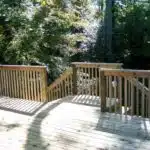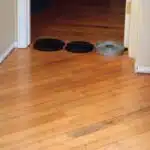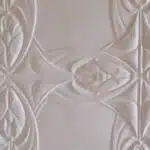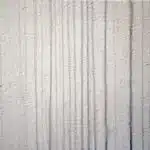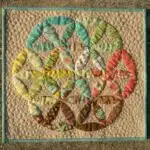Skim coating is a common technique used to create a smooth and even finish on walls. It involves applying a thin layer of joint compound over an existing surface, such as drywall or plaster, to cover up imperfections and provide a fresh canvas for painting or wallpapering. A properly executed skim coat can transform the look and feel of a room, but it requires careful preparation, attention to detail, and patience.
In this article, we will explore the basics of how to skim coat walls, from assessing the condition of your walls to selecting the right tools and materials for the job. Whether you are a DIY enthusiast looking to improve your home’s interior or a professional contractor seeking to hone your skills, this guide will provide you with practical tips and expert advice for achieving flawless results. By following these steps, you can achieve a smooth and seamless finish that will enhance the beauty and value of any room in your home or business.
Assessing The Condition Of Your Walls
A well-skimmed wall is a thing of beauty – smooth, even surfaces that provide the perfect backdrop for any home decor. But before you can start skim coating your walls, it’s important to assess their condition to determine if they need any repairs or if this is a job best left to professional hands.
Common wall problems like cracks, dents, and holes can be tackled with some DIY know-how and a bit of patience. However, more serious issues like water damage or structural damage will require professional assessment and repair. Attempting to skim coat over these problems without addressing them first will only lead to unsightly results that may even compromise the integrity of your walls.
So how do you know when it’s time to call in the professionals? If you’re unsure about your ability to identify and fix potential problems on your own, it’s always best to err on the side of caution and consult with an experienced contractor. They’ll be able to assess the condition of your walls and provide recommendations for how best to proceed with the skim coating process. Remember – investing in professional assessment now can save you time, money, and frustration down the line.
As you begin preparing your workspace for skim coating, keep in mind that proper preparation is key to achieving optimal results. Before diving into the actual application process, take some time to clean your walls thoroughly and remove any loose debris or dust that may impede adhesion. By taking these steps beforehand and ensuring that all necessary repairs have been made, you’ll be setting yourself up for success in creating a beautifully smooth finish on your walls.
Preparing Your Workspace
Organizing your workspace is a crucial step in the skim coating process. Before you begin, make sure that you have cleared the area of any clutter and debris. This will not only ensure that you have enough space to work in, but it will also help prevent accidents and injuries.
To further protect yourself while working, it is essential that you choose the right protective gear. Wear gloves, a respirator mask, and safety goggles to protect your hands, lungs, and eyes from potential harm. Make sure that your protective gear fits well and is comfortable to wear for extended periods.
By following these tips for organizing your workspace and choosing the right protective gear, you can create a safe environment for yourself as you tackle the task of skim coating walls. In the next section, we will discuss gathering all of the materials and tools you’ll need for this project.
Gathering Your Materials And Tools
To successfully skim coat your walls, it is essential to have the right materials and tools. Before beginning the process, you must ensure that you have everything you need to complete the job effectively. Choosing the right tools is crucial in achieving a smooth finish on your walls.
When selecting tools for skim coating, consider investing in a trowel or putty knife with a comfortable grip that fits well in your hand. Additionally, make sure it has a flexible blade that allows you to apply even pressure when spreading joint compounds. Another useful tool is a sanding block or sandpaper for smoothing out rough spots after applying the skim coat.
Once you’ve gathered all of your materials and tools, it’s time to prepare the joint compound. Joint compound comes in different types, so make sure to choose one that suits your needs. If you’re working on small areas or minor repairs, premixed joint compound will suffice; however, if you’re tackling larger projects or want more control over consistency, consider using setting-type joint compound which hardens as it dries.
Now that we’ve discussed how to gather your materials and choose the right tools let’s move onto preparing the joint compound. Mixing joint compound can be straightforward if done correctly. In the next section, we’ll go through each step of mixing joint compound and discuss tips on how to achieve the perfect consistency for your skim coat.
Mixing Joint Compound
With all the necessary materials and tools gathered, it’s time to move on to the next step in skim coating walls. It’s essential to have a clear understanding of how the process works if you want to achieve smooth, even walls. Imagine a blank canvas that needs your artistic touch to bring it to life. That’s what skim coating is all about – transforming uneven surfaces into a clean slate ready for paint or wallpaper.
Before applying your first coat, do a consistency check on your joint compound mixture. The ideal consistency should be similar to thick pancake batter. If it’s too thick, add some water; if it’s too thin, add more joint compound powder. Troubleshooting tips are also necessary in case you encounter problems during the application process. For instance, if air bubbles appear as you apply the coat, don’t panic; use a putty knife and skim over them gently until they disappear.
To ensure uniformity throughout the wall surface, begin with a four-item numeric list in markdown format:
- Start from one corner of the wall and work your way across.
- Use moderate pressure when applying the compound.
- Keep an eye out for any high or low spots and adjust accordingly.
- Finish each section before moving on to another.
As a professional skim coating expert, I know that getting started can be daunting for beginners. However, with patience and practice, anyone can master this technique and achieve beautiful results. The most crucial part is ensuring that every step is done correctly since mistakes can ruin an entire project.
With everything set up and ready to go, now it’s time for the exciting part – applying the first coat!
Applying The First Coat
Now that you have prepped your walls, it’s time to apply the first coat of skim coating. This is where the real work begins. Before you start, make sure that all of your tools are clean and free from any debris. You will need a trowel, a hawk, a mixing bucket, and a drill with a mixing attachment.
Begin by mixing your joint compound according to the manufacturer’s instructions. You want it to be smooth but not too thin or thick. Once you have mixed your compound, load it onto your hawk using your trowel. Start in one corner of the room and work your way around in small sections. Use long strokes and try to keep the pressure consistent throughout each section. Tips: Work fast but don’t rush; apply enough compound so that it covers the wall evenly; make sure there are no ridges or bubbles left behind.
Techniques: Feather out edges as much as possible; don’t leave any excess compound on the wall; use light pressure when smoothing out edges; keep your tools clean at all times. After completing an entire section, let it dry for at least 24 hours before proceeding to sanding the first coat.
Sanding The First Coat
After allowing the first coat of skim coat to dry completely, it’s time to proceed to sanding. Sanding is a crucial step that ensures the smoothness of the wall surface. However, before sanding, make sure to wear protective gear such as a dust mask and safety glasses.
Common mistakes when sanding include using too much pressure, which can result in uneven surfaces or even damage to the wall. Another mistake is not sanding enough, leaving behind rough spots that are visible once painted. To avoid these issues, use light pressure and continuously check the surface with your hand for smoothness.
Techniques for efficiency include using a sanding block or pole sander, which allows for easier access to high or hard-to-reach areas. Additionally, it’s recommended to use fine-grit sandpaper (220-320 grit) for a smoother finish. Remember to clean up all dust and debris thoroughly after sanding before proceeding with the next step of applying the second coat.
To apply the second coat of skim coat, prepare another batch of mixture and follow the same steps as before. However, this time you may need less product than the first coat since it only needs to fill in any remaining small imperfections in the wall surface. Keep in mind that patience is key when skim coating walls – rushing through each step can result in subpar results.
Applying The Second Coat
After sanding the first coat, it’s time to apply the second one. But before we dive into the process, let’s take a moment to appreciate how far we’ve come. From an uneven and textured wall, we are now moving towards a smooth and polished surface. It wouldn’t have been possible without patience, skill, and perseverance.
Let’s talk about tips for consistency while applying the second coat. Firstly, mix your skim coating compound well and make sure it is free of lumps or debris. Secondly, use a wider trowel than you did for the first coat. It will cover more surface area and create fewer lines or marks on the wall. Lastly, use a light touch while spreading the compound on the wall. The pressure should be just enough to glide smoothly over the surface without leaving any bumps.
How to avoid common mistakes? One mistake that many DIY enthusiasts make is not letting the first coat dry completely before starting with the second one. This can cause peeling or cracking of both coats in the long run. Another mistake is overworking or underworking certain areas of the wall, leading to an uneven finish. To avoid this, apply even pressure throughout and work in small sections at a time.
Now that we know how to apply the second coat with finesse let’s move on to sanding it down for a perfect finish. Sanding is crucial to achieve that polished look that we all desire from our walls. So let’s explore how it’s done!
Sanding The Second Coat
After allowing the second coat to dry completely, you can start sanding the walls. Before you begin, choose the appropriate sandpaper grit for your project. Generally, a 120-grit sandpaper is ideal for smoothing out rough spots and imperfections in the wall. However, if you have deeper gouges or scratches on your wall, you may need to use a coarser grit sandpaper.
It is important to avoid over-sanding as it can cause damage to the wall and ruin all of your hard work. Use light pressure when sanding and do not stay in one area for too long. Keep moving your hand in circular motions while checking frequently to see if the surface is smooth enough.
When dealing with dust, protecting your lungs should be a top priority. Wear a mask that filters out small particles and goggles to protect your eyes from flying debris. Additionally, cover any vents or openings that could allow dust into other areas of your home. A vacuum cleaner with a HEPA filter can also be helpful in removing dust as you work. By taking these precautions, you can ensure a safe environment while achieving a professional-looking finish.
Transition: Once you have completed sanding and removed all dust particles from the surface of the wall, it is time to move on to applying the final coat of skim coating material.
Applying The Final Coat
- Prior to applying a skim coat, it is important to ensure that the surface is free of any dust, dirt, oils, or other contaminants.
- The next step is to mix a skim coating compound, which can be a drywall joint compound or a plaster-based material.
- Once the material is thoroughly mixed, it should be applied in a thin layer to the surface with a trowel.
- After the skim coat is applied and has had time to dry, it should be sanded with a medium grit sandpaper and any additional coats should be applied as needed for a smooth finish.
Preparing The Wall
Before applying the final coat, it is important to properly prepare the wall for skim coating. This involves assessing tools and choosing the appropriate primer. Skim coating is a process that requires attention to detail and precision, so proper preparation is key to achieving a smooth and flawless finish.
Assessing tools is an essential step in preparing the wall for skim coating. It is important to ensure that all necessary tools are on hand before starting the project. These tools include a trowel, sandpaper, joint compound, and a putty knife. It is also important to assess the condition of these tools to ensure they are in good working order. A dull or damaged tool can cause uneven application and make it difficult to achieve a smooth finish.
Choosing primer is another crucial step in preparing the wall for skim coating. The right primer will create a smooth surface that allows for easy application of the final coat. The type of primer needed will depend on several factors including the condition of the wall, its texture, and any existing paint or wallpaper. It is important to choose a high-quality primer that is designed specifically for use with skim coating products. By taking these steps, you can ensure that your walls are properly prepared for skim coating and achieve a professional-looking finish without any imperfections or flaws.
Applying The Skim Coat
After properly preparing the wall for skim coating, the next step is to apply the skim coat. This process involves applying a thin layer of joint compound or other skim coating product to create a smooth and even surface. Applying the skim coat requires attention to detail and precision to avoid bumps and imperfections.
To start, it is important to mix the joint compound thoroughly before application. This ensures that the product is evenly distributed and will provide a consistent finish. When applying the skim coat, it is best to work in small sections at a time, using a trowel or putty knife to spread the compound evenly over the surface. It is also helpful to work in a crisscross pattern, smoothing out any bumps or ridges as you go.
Tips for smoothing out the skim coat include using long strokes with the trowel or putty knife and lightly sanding any rough spots between coats. It is also important to avoid overworking the joint compound, as this can cause it to become too dry and difficult to work with. By following these tips, you can achieve a smooth and flawless finish with your skim coat without any bumps or imperfections.
Sanding The Final Coat
As you complete skim coating your walls, it is important to consider the sanding process. Sanding is a crucial step in achieving a smooth and even surface that is ready for painting or wallpapering. To begin, choosing the appropriate sandpaper grit is essential. The grit of the sandpaper determines how rough or fine the paper is and can range from 60 to 220 grit.
For initial sanding, it is best to use a coarser grit such as 80-100 grit sandpaper. This will help remove any high spots and bumps left after the application of the final coat. After this initial sanding, switch to finer grits such as 120-150 and then 220 for a smooth finish. A good rule of thumb is to use at least two different grits of sandpaper during the process.
When it comes to best sanding techniques, it’s essential to keep your movements consistent and avoid applying too much pressure. Use long strokes with light pressure in a back-and-forth motion while keeping the sander flat against the wall surface. Be sure to clean up any dust created during sanding before inspecting the surface for imperfections in preparation for painting or wallpaper installation.
Inspecting The Surface For Imperfections
After sanding the final coat, it’s important to inspect the surface for imperfections before moving on to the next step of skim coating. Common imperfections include cracks, bumps, and uneven areas. These issues can be addressed by filling in the cracks with joint compound and using a putty knife to smooth out any bumps or uneven areas.
To address cracks, start by widening them slightly with a putty knife. Then, fill in the crack with joint compound and smooth it out with the putty knife. Allow the compound to dry completely before applying another coat if needed. It’s important to note that if there are large or deep cracks, they may require additional steps such as mesh tape or structural repairs before skim coating.
In addition to addressing imperfections, it’s also important to ensure that the surface is clean and free of dust or debris before priming. This can be done using a damp cloth or sponge to wipe down the walls and ceiling. Once this step is complete, you’re ready to move on to priming the surface for paint or wallpaper application.
Priming The Surface
When it comes to skim coating walls, priming is an important step that must not be overlooked. A good primer will help ensure a smooth and even surface for painting or wallpapering. But before you can choose the right primer, you must first consider the condition of your walls.
If your walls are new or have been recently repaired, you may only need a basic primer to seal the surface and promote adhesion. However, if your walls have any stains, discoloration, or other imperfections, you’ll need a special type of primer designed for these issues. For example, if your walls have water stains, you’ll want to use a stain-blocking primer to prevent them from bleeding through the paint.
Once you’ve chosen the appropriate primer for your walls, it’s time to apply it. Start by using a paintbrush to cut in around the edges of the room and any areas where a roller won’t fit. Then, use a roller to apply the rest of the primer in long vertical strokes. Be sure to work quickly and avoid overworking the surface as this can cause streaks and other imperfections. Allow the primer to dry completely before moving on to the next step – painting or wallpapering.
Painting Or Wallpapering
When it comes to finishing a room, there are two main options: painting or wallpapering. Both have their pros and cons, so it is important to consider which one would be the best fit for your specific project.
Painting is a popular choice because it allows for a wide range of color options and can be less expensive than wallpapering. It also has the added benefit of being easier to touch up if needed. However, the downside is that paint can chip or peel over time and may require more maintenance in the long run.
Wallpapering, on the other hand, creates a unique look and can add texture and depth to a room. There are several popular wallpapering techniques such as traditional wallpaper, removable wallpaper, and even textured wallpaper. The downside is that it can be more expensive than painting and may not be as easy to remove or update if you decide to change your decor in the future.
To help make your decision easier, take into consideration your budget, desired style, and level of maintenance you are willing to put in for upkeep. Whatever you choose, both painting and wallpapering can bring new life to your walls.
Tips for Wallpapering:
- Properly prep your walls before applying any adhesive
- Use a smoothing tool to ensure all air bubbles are removed
Popular Wallpaper Techniques:
- Traditional Wallpaper – applied with adhesive
- Removable Wallpaper – great option for renters or those who like to switch up their decor frequently . Removable wallpaper is easy to install and can be removed without damaging the walls.
Cleaning Up Your Workspace
Painting or wallpapering your walls can be a tedious task, especially if the surface is not smooth. Skim coating is a technique that can help create a smooth and flawless surface for painting or wallpapering. However, before you start skim coating, it’s important to organize your supplies and minimize mess to ensure a successful outcome.
To start organizing your supplies, gather all the necessary tools and materials such as a trowel, joint compound, sandpaper, and painter’s tape. It’s also helpful to have a drop cloth or plastic sheeting to protect your floors and furniture from any spills or splatters. Once you have everything you need in one place, set up your workspace by clearing the area around the wall you’ll be working on.
Minimizing mess is crucial during the skim coating process. To avoid making more work for yourself later on, use painter’s tape to cover any fixtures or surfaces that you don’t want to get joint compound on. You can also use plastic sheeting or drop cloths to protect your floors and furniture from any drips or spills. By taking these steps beforehand, you can streamline the process of skim coating and avoid unnecessary cleanup time.
| Tools | Materials |
|---|---|
| Trowel | Joint Compound |
| Sandpaper | Painter’s Tape |
| Drop Cloth/Plastic Sheeting |
As an expert in skim coating, I highly recommend taking the time to organize your supplies and minimize mess before beginning this task. Not only will it make the process smoother and more efficient but it will also ensure that you achieve professional-looking results. So take some time to prepare your workspace before diving into this project.
Transition: After organizing supplies and minimizing mess for successful skim coating, let’s now troubleshoot common issues that may arise during the process.
Troubleshooting Common Issues
Even with the best intentions and skills, mistakes can happen during the skim coating process. Here are some of the most common issues that people encounter and how to fix them.
Common Mistakes:
- Applying too much pressure on the trowel, resulting in an uneven surface.
- Not using enough water when mixing the joint compound, leading to a dry and crumbly mixture.
- Rushing through the sanding process, causing scratches and creating more work down the line.
Best Practices:
- Start with a clean surface before beginning skim coating.
- Use a high-quality joint compound for the best results.
- Take your time while applying and smoothing out the joint compound.
In addition to avoiding common mistakes and following best practices, there are several other tips for ensuring a successful skim coating job. One of the most important things to keep in mind is patience. Rushing or cutting corners will only result in a less-than-perfect finish. Also, be sure to use good lighting while working so that you can see any imperfections as you go along. Lastly, don’t be afraid to ask for help or advice from experienced professionals or online communities. With practice and persistence, anyone can become an expert skim coater!
Conclusion
Assessing the condition of your walls is key to achieving a smooth and flawless skim coat. Just as a doctor must examine a patient before prescribing treatment, you must carefully inspect your walls for cracks, bumps, and other imperfections that may require additional preparation. Preparing your workspace involves masking off areas where you do not want joint compound to appear, covering furniture and floors with drop cloths, and ensuring proper ventilation.
Gathering your materials and tools is also essential to ensure a successful skim coating project. You will need joint compound, a mixing paddle, sandpaper or sanding sponge, a trowel or putty knife, primer, paint or wallpaper (depending on your preference), and other miscellaneous supplies such as buckets and stir sticks.
Mixing joint compound requires patience and attention to detail. The consistency should be similar to that of cake batter, which allows for easy spreading without dripping or sagging. Applying the first coat is an art form that requires a steady hand and consistent pressure as you move the trowel across the wall in smooth strokes. Priming the surface before painting or wallpapering ensures better adhesion and long-lasting results.
In conclusion, skim coating walls can be likened to performing surgery on a patient’s skin – it requires precision, skill, and attention to detail. By assessing the condition of your walls beforehand, preparing your workspace properly, gathering all necessary materials and tools, mastering the art of mixing joint compound and applying it evenly in smooth strokes with consistent pressure using a trowel or putty knife – followed by priming before painting or wallpapering – you can achieve beautiful results that will last for years to come. Remember to clean up your workspace thoroughly after each step of the process so that you can troubleshoot any issues that arise along the way with ease.
Image Credits
- “Gold coated wall details” by árticotropical (featured)









